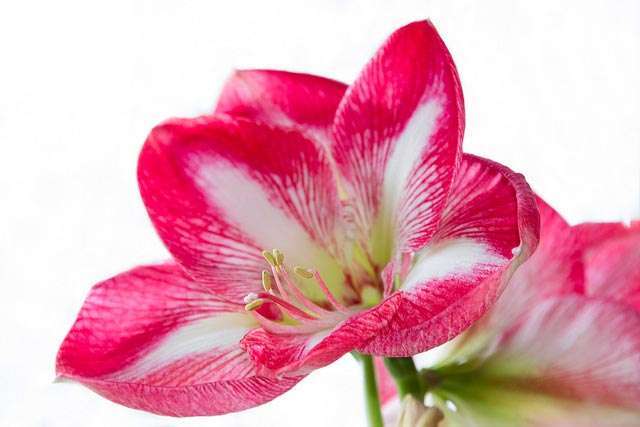Now’s also a good time to plant Christmas amaryllis
MANHATTAN, Kan. – Many shrub roses in Kansas are pretty hardy souls, but Kansas State University horticulture expert Ward Upham knows some species still need a little bit of tender care heading into the winter months.
“The hybrid teas have certain species in their ancestry that originated in the warm climate of southern China,” Upham said. “Those roses need protection to reliably survive Kansas winters.”
To help protect those varieties, mound soil or compost about 8 to 10 inches high around each plant. “If using soil, bring it in from another part of the garden,” Upham said. “Do not pull it from between plants because this can damage the rose roots or make them more susceptible to cold.”
Mounding should be done by Thanksgiving, Upham said. Then, after the ground has frozen, add 4 inches of straw mulch, leaves or hay for further protection. Spread more soil on top of the mulch to keep it in place.
“Do not add the mulch before the ground freezes or else mice may invade and feed on the roses over the winter,” Upham said. “The purpose of these coverings is not only to moderate the cold, but also to prevent warm days during the winter or early spring from stimulating growth that is tender to cold weather.”
Strong winter winds can damage the crown of the plant or loosen surrounding soil. To protect the plants from strong winds, prune canes to 36 inches tall and tie plants together.
“Next spring,” Upham said, “remove coverings before new growth starts. If soil was used for mounding, remove it from the area so that the level of soil stays constant from year to year. Compost can be spread out around the plant and used as mulch. Wait until the ground thaws or the tops may begin growing before the roots can provide water.”
Christmas Amaryllis
Upham said now’s a great time to plant bulbs for those wanting amaryllis blooms for Christmas.
“The amaryllis is a tender bulb that is ready to bloom when purchased,” Upham said. “The genus name for this plant is ‘Hippeastrum,’ which means ‘horse star’ – an appropriate name for a plant that produces massive blooms as much as 8 to 10 inches across.”
The amaryllis often produces three to four blooms on a 1- to 2-foot stem. The leaves usually start to appear when the flowers begin to open.
“Amaryllis bulbs can be huge, approaching the size of a grapefruit,” Upham said. “The larger the bulb, the larger the flowers and the more expensive the bulb will be.”
Amaryllis should be planted in a pot that is only 1 to 2 inches larger in diameter than the bulb. More information on successfully planting amaryllis this year is available online in the weekly Horticulture Newsletter, which is available from the K-State Department of Horticulture and Natural Resources.
Interested persons can also send their garden- and yard-related questions to Upham at [email protected], or contact your local K-State Research and Extension office.
FOR PRINT PUBLICATIONS: Links used in this story
K-State Horticulture Newsletter, https://hnr.k-state.edu/extension/info-center/newsletters/index.html
K-State Department of Horticulture and Natural Resources, https://hnr.k-state.edu
K-State Research and Extension local offices, www.ksre.k-state.edu/about/stateandareamaps.html
K State Research and Extension is a short name for the Kansas State University Agricultural Experiment Station and Cooperative Extension Service, a program designed to generate and distribute useful knowledge for the well being of Kansans. Supported by county, state, federal and private funds, the program has county extension offices, experiment fields, area extension offices and regional research centers statewide. Its headquarters is on the K State campus in Manhattan. For more information, visit www.ksre.ksu.edu. K-State Research and Extension is an equal opportunity provider and employer.
Story by:
Pat Melgares
785-532-1160
[email protected]
For more information:
Ward Upham
785-532-6173
[email protected]





